I managed to take a picture of Comet PanStarrs last evening (3/13/13). It was a beautiful evening, but the comet certainly wasn’t the spectacle I thought I’d see. The only reason I managed to get a photo was because the sky was clear enough above the low clouds on the far horizon, and I stayed and kept taking photos as the twilight began fading in the western sky – and then continued doing so until the only light left in the sky was the starlight overhead. The best shot I got of the comet was at about 45 minutes after sunset. The sky needed to be dark enough so the comet was visible, as well as clear enough for the comet to show up in a photo. Soon after that it was covered by the clouds.
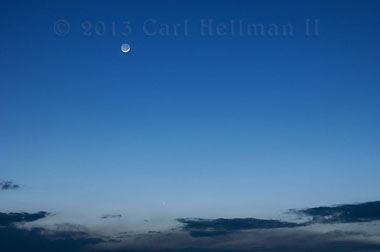
I never did see actually see the comet while I was there, and didn’t notice it then in the photos I shot either. I figured it was too low, or in the clouds, or not in the general area I thought it would be in. It wasn’t until I got back home, checked the internet to verify where the comet should have been in the sky relative to the moon, and checked my photos again, that I noticed a soft, fuzzy, bright point in my photo just above the clouds, that was in line with the moon. I zoomed into the photo with the zoom button on the camera, and there it was!
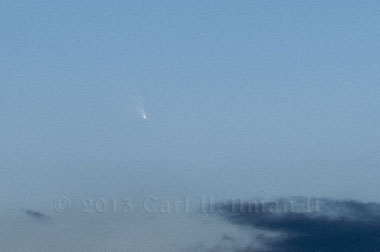 This was my second time out. The first was on Friday March 8. I watched a beautiful sunset, and took photos the whole time, but never did see the comet. The pictures I’d been seeing posted on the web made me think it should be readily visible, but the reality is – at least for our latitude here in the Adirondacks, the comet is still so close to the sun that it’s quite difficult to see with the naked eye. As it gets further away from the sun each night this month, it will become a much easier target in the evening sky. It will also be fading ever so slightly each night, but at least it will be higher above the glow of twilight, and easier to see.
This was my second time out. The first was on Friday March 8. I watched a beautiful sunset, and took photos the whole time, but never did see the comet. The pictures I’d been seeing posted on the web made me think it should be readily visible, but the reality is – at least for our latitude here in the Adirondacks, the comet is still so close to the sun that it’s quite difficult to see with the naked eye. As it gets further away from the sun each night this month, it will become a much easier target in the evening sky. It will also be fading ever so slightly each night, but at least it will be higher above the glow of twilight, and easier to see.
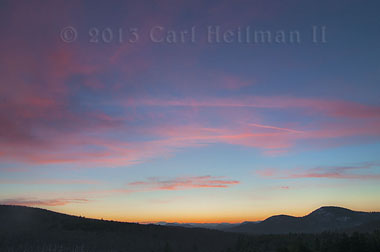 For now, it’s best to pick a nice clear evening, find a high location with a clear view to the western horizon. Enjoy the beauty of the evening as day fades to dark. Then about 40 minutes after the actual time the sun sets (roughly 7 PM right now – but this gets slightly later each night this month), start scanning the sky just above where the sun set with binoculars and look for a soft, fuzzy point of light within the glow of twilight.
For now, it’s best to pick a nice clear evening, find a high location with a clear view to the western horizon. Enjoy the beauty of the evening as day fades to dark. Then about 40 minutes after the actual time the sun sets (roughly 7 PM right now – but this gets slightly later each night this month), start scanning the sky just above where the sun set with binoculars and look for a soft, fuzzy point of light within the glow of twilight.
Looking to get photos? The photo of the crescent moon, comet, and clouds was shot with my D300S camera, at 800 ISO, using a 60 mm focal length on my Nikkor 18-300 zoom, for 2 seconds at f /5.6. If I knew that focal length would have worked fine, and also knew that I was actually taking a photo of the comet, I would have used my 50 mm f1.4 lens, with a faster shutter speed, larger aperture, and lower ISO. It’s best to use at least an f 2.8 lens. With slower lenses you’ll just need to bump up the ISO to as high as 800 so you can set a fast enough shutter speed so there is minimal motion blur on the stars and comet because of the motion issues from the rotating Earth. Try to keep shutter speeds no longer than 2 seconds at that focal length. Be sure to use a good sturdy tripod with a cable or remote release to avoid moving the camera while taking a shot. Happy comet hunting!

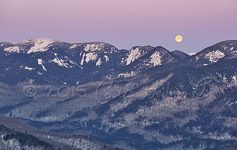
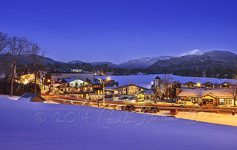
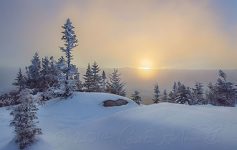
The truth is that I have enjoyed reading your comments and explanations about how to locate and snap the mentioned comet. Congratulations from Tenerife, Canary Islands.